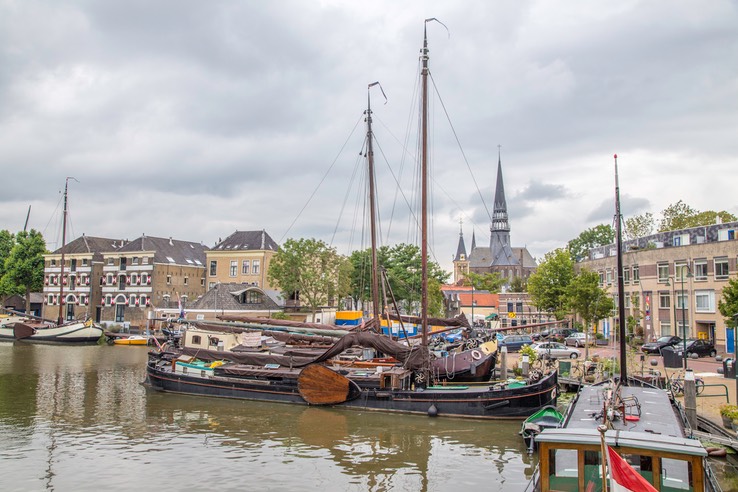 As we took shelter under a solitary sun umbrella, the waitress was sweeping water off the tables with a squeegee and said: “Welcome to Holland!” The unnatural heatwave is definitely over, but we have been lucky so far. The showers came either at night or were very short lived, and just as quickly as they appeared, the sky turned a vivid blue again spattered with an array of fluffy clouds.
As we took shelter under a solitary sun umbrella, the waitress was sweeping water off the tables with a squeegee and said: “Welcome to Holland!” The unnatural heatwave is definitely over, but we have been lucky so far. The showers came either at night or were very short lived, and just as quickly as they appeared, the sky turned a vivid blue again spattered with an array of fluffy clouds.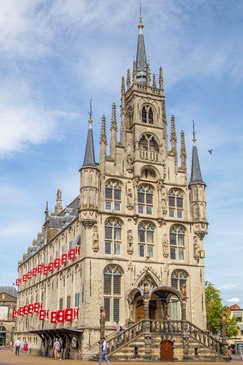
We are in beautiful Gouda where life happens all around the market square and the old town hall. 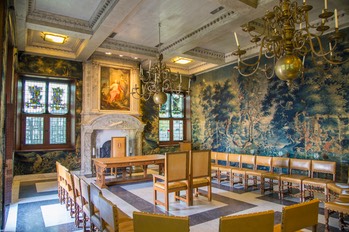
The old Weighing House is the other noticeable feature on the square. Here the tourist information is housed as well as the cheese and craft museum. Unfortunately we are missing out on the famous cheese market which is only held on a Thursday. But we received plenty of information about cheese making in the museum. Unlike the scales in Oudewater, the museum’s scales were used to weigh the big Gouda cheeses, which can be as heavy as 10-12 kilos each. No wonder it is said that the cheeses were rolled to Amsterdam! 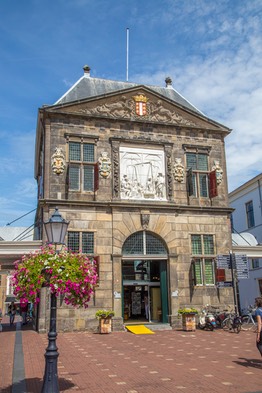
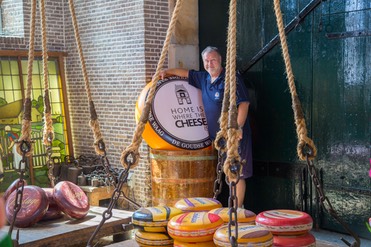
When enquiring about the local clay pipes a museums guide showed us how they are made. Beside cheese, pipe making and Delft Ceramics were the other major crafts in Gouda. The clay for the pipes comes from France, Germany or Belgium as the local clay contains sand and is too grainy. The clay is pre-rolled by hand and then placed into a mould. The stem is then pierced with a fine long needle, curved by hand and the pipe is dried to harden.
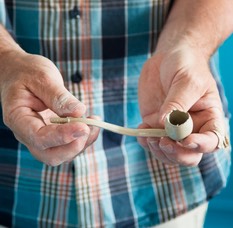
The rivers Gouwe and the Hollandse Ijssel shape the inner city. The oldest lock of town had once thousands of boats travelling from Amsterdam to Antwerp and back. This meant a long wait at the lock, sometimes up to three days in which the businesses around town made a great profit from the bargees.
The fish market with it’s halls and toll house is nearby and so is the first bakery making the famous stroopwafels, delicious cookies made from wafers and syrup.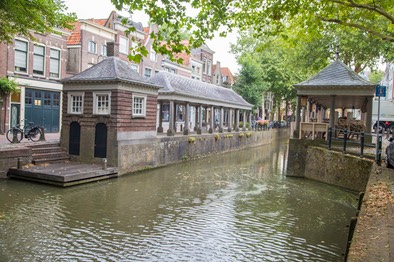
We wonder if the children of the old Gouda Orphanage were ever treated to stroopwafles? Apparently they had to endure harsh punishments at the time. 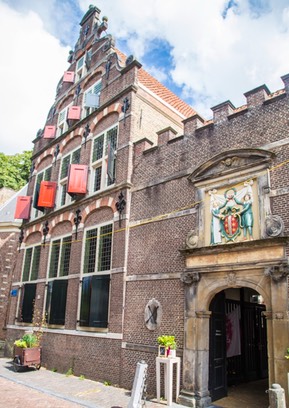
Common penalties were: being locked inside a dark cupboard or, for girls who wet their beds: to stand in the courtyard with their wet sheets over their heads.
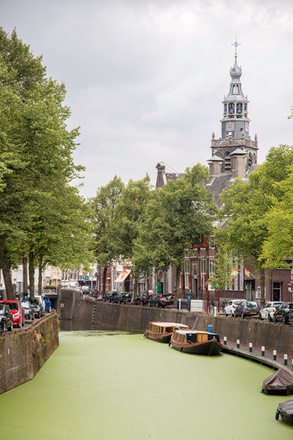
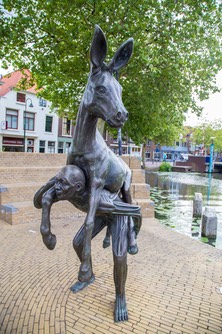
Like many Dutch cities, Gouda also looked after the aged and poor by building almshouses with beautiful courtyards, some of which are accessible to tourists.
Diverse small churches are proof of the religious tolerance of town. The main church is Sint Jan’s now a protestant church. Thankfully it retained all the amazing stainless windows from catholic times.
We puzzled greatly about a statue of a man shouldering a donkey. So far I could only attain that the sculpture is the work of an Amsterdam artist and symbolises the “Inverted World”.
As we have currently been waiting for 1/2 a day in front of a lock which restricts it’s opening times due to the lack of water, I only hope that in the inverted world we don’t have to carry our boat to the next canal!